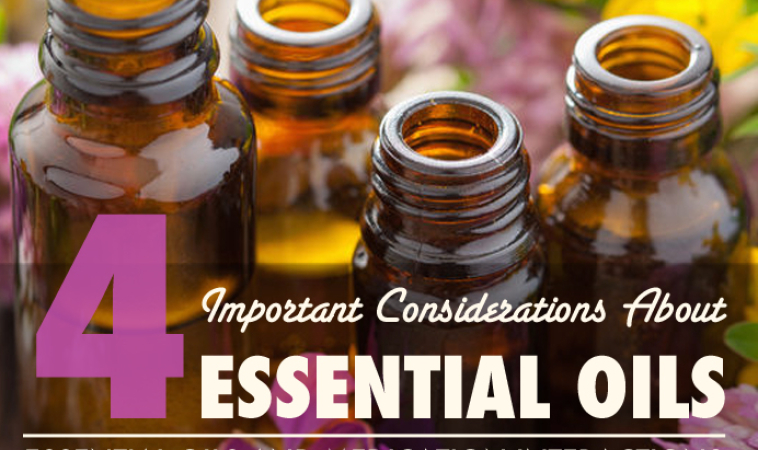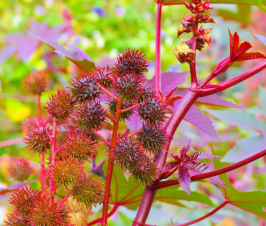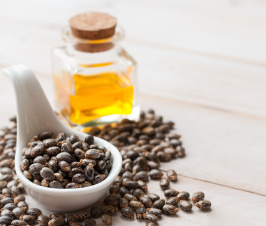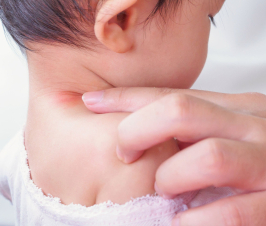Dr. Sarah LoBisco, ND
@DrLoBisco
One ofthe major principlesof medicine is to “First Do No Harm.” Accordingly, naturopathic doctors will respect the body’s innate ability to heal and will seek to use the least invasive means, at the minimal effective dose, in order to support this renewal process.1
One of the wellness tools I use to honor this restoration process is essential oils. These beautiful secondary plant metabolites that make up essential oils benefit our bodies in similar ways that they do in plants that produce them. Specifically, photosynthesis produces primary metabolites (proteins, carbohydrates, lipids, and chlorophyll) in plants that are necessary to keep them alive; however, in order for the plants to stay healthy and survive, their secondary metabolites are essential. This means that just as we must obtain our nutrition from our diet to live, these “survival constituents” in essential oils, such as polyphenols, phenylproponoids, and terpenoids, can contribute to our immune defenses and health outcomes as well. 2-7
As essential oils become more popular, the merger between their use and conventional therapies is more likely. Therefore, it’s necessary to not only use common sense and safety precautions with their implementation, but to also explore their biochemical effects and potential drug interactions.
Due to the various qualities of essential oils that are available, standardization specifics, and different schools of aromatherapy, there is no definitive guide and universally agreed upon applications and dosages of them.8 The information I’m providing is based on standardized oils of high quality that combine the applications of inhalation, topical, and ingestion and my thirteen years in practice using them with clients.
In this blog, I’m going to give you what I consider the four most important general considerations regarding the use of essential oils and medications. In a follow up blog, I will get into more specific interaction details.
The Tweak Factor
Essential oils and medications both influence the organs of elimination (lungs, kidneys, liver, skin, and colon), therefore, it’s important to monitor your response and assess with your doctor the dosage throughout use. Furthermore, everyone is different, with different detoxification capacities and abilities to metabolize drugs, supplements, and nutrients. Therefore, be aware of your body and listen to its response.9
The Space Factor
It’s important to time your dosage of medications at least 2-3 hours from using essential oils. If on a “blood thinner”, only use oils if your physicians are monitoring “clotting time” (PT/PTT/INR).
The following oils contain coumarins, or other constituents that may interfere with blood thinners, and should be used cautiously with these medications: angelica, birch, cinnamon, clove, fir (balsam), helichyrsm, Laurus nobilis, nutmeg, oregano, wintergreen, unless you are being monitored by your doctor on levels.10-11
The Bathroom Factor
Oils do have limited metabolism in the liver and are excreted in the kidneys and lungs. In geek terms, according to Therapeutic Benefits of Essential Oils, Nutrition, Well-Being and Health, most components of essential oils are taken in then metabolized by limited phase I, followed by glucuronidation and sulfation and then through the kidneys as polar compounds or exhaled through the lungs as CO2.12
In general terms, if you are finding you are peeing a lot when using oils, or getting a “detox headache,” you may want to decrease your dose a bit.
The Grapefruit Factor
We’ve all heard of the scary stories of people who take their blood pressure medications in the morning and innocently sip some grapefruit juice to incorporate more vitamin C in the diet. Next thing you know, their loved one is dialing “9-1-1!”
This brings up an important question, “To Be or Not to Be…Bergamottin or DHB.”
Grapefruit juice (GFJ) can be a major inhibitor of drugs due to the presence of these furanocoumarins, bergamottin and 6,7-dihydroxybergamottin (DHB).13
According to the essential oil pharmacist, “While bergamattin and bergapten are found in grapefruit oil and other citrus oils, the likelihood of them causing clinically important drug interactions is much lower than with DHB or flavonoids.”14
I feel; however, that if there is a potential interaction with some of the constituents present in the oil, it’s safer to swap grapefruit oil for a different citrus oil, such as lemon and lime.
Wikipedia actually has a pretty decent list of medications that can interact with the liver enzymatic pathway that furanocoumarins in GFJ modulate. Therefore, if you are on one of these medications, it may be best to avoid this pink fruit juice.
Now that you have the general factors down of safety and use of essential oils with medications, I will go over some more specific drug-essential oil interactions in the next blog.
 Sarah Lobisco, ND, is a graduate of the University of Bridgeport’s College of Naturopathic Medicine (UBCNM). She is licensed in Vermont as a naturopathic doctor and holds a Bachelor of Psychology from State University of New York at Geneseo. Dr. LoBisco is a speaker on integrative health, has several publications, and is a certification candidate in functional medicine. Currently, she is the Director of Clinical Education for an esteemed nutraceutical company.
Sarah Lobisco, ND, is a graduate of the University of Bridgeport’s College of Naturopathic Medicine (UBCNM). She is licensed in Vermont as a naturopathic doctor and holds a Bachelor of Psychology from State University of New York at Geneseo. Dr. LoBisco is a speaker on integrative health, has several publications, and is a certification candidate in functional medicine. Currently, she is the Director of Clinical Education for an esteemed nutraceutical company.
References:
- American Association of Naturopathic Physicians. Definition of Naturopathic Medicine, House of Delegates Position Paper, Amended 2011. Copyright 2015. Available at: http://www.naturopathic.org/content.asp?contentid=59
- Korkina L, Kostyuk V, De Luca C, Pastore S. Plant phenylpropanoids as emerging anti-inflammatory agents. Mini Rev Med Chem. 2011 Sep;11(10):823-35.
- Lemberkovics E, Petri, G., Nguyen, H. and Máthé, I. Relationships Between Essential Oil and Flavonoid Biosynthesis in Sweat Basil. Acta Hort.1996. 426:647-656.
- Yoshiko Fukuchi, Masanori Hiramitsu, Miki Okada, Sanae Hayashi, Yuka Nabeno, Toshihiko Osawa, Michitaka Naito. Lemon Polyphenols Suppress Diet-induced Obesity by Up-Regulation of mRNA Levels of the Enzymes Involved in beta-Oxidation in Mouse White Adipose Tissue. J Clin Biochem Nutr. 2008; 43(3):201-9.
- The mechanisms underlying these processes are discussed. Dietary phenolics: chemistry, bioavailability and effects on health. Nat Prod Rep. 2009 Aug;26(8):1001-43. doi: 10.1039/b802662a.
- Del Rio D, Rodriguez-Mateos A, Spencer JPE, Tognolini M, Borges G, Crozier A. Dietary (Poly)phenolics in Human Health: Structures, Bioavailability, and Evidence of Protective Effects Against Chronic Diseases. Antioxidants & Redox Signaling .2013;18(14):1818-1892. doi:10.1089/ars.2012.4581.
- Natural phenolic compounds from medicinal herbs and dietary plants: potential use for cancer prevention. Nutr Cancer. 2010;62(1):1-20. doi: 10.1080/01635580903191585.
- National Cancer Institute – PDQ Cancer Information Summaries. Aromatherapy and Essential Oils (PDQ®) Health Professional Version. Last Update: December 30, 2014. Available at: http://www.ncbi.nlm.nih.gov/pubmedhealth/PMH0032645/
- Takeuchi F, McGinnis R, Bourgeois S, Barnes C, Eriksson N, et al.A Genome-Wide Association Study Confirms VKORC1, CYP2C9, and CYP4F2 as Principal Genetic Determinants of Warfarin Dose. PLoS Genet. 2009; 5(3): e1000433. doi:10.1371/journal.pgen.1000433
- Essential Science Publishing (compilation). Essential Oils Desk Reference4th ed. USA: Essential Science Publishing; 2007.
- Young G. Essential Oils Integrative Medical Guide 2nd ed. Canandaigua, NY: Life Sciences Press; April 1, 2003
- Djilani, A & Dicko, A. The Therapeutic Benefits of Essential Oils, Nutrition, Well- Being and Health. Dr. Jaouad Bouayed ed. 2012; 160.
- Natural Standard Database. Grapefruit Juice. (Professional Database-Subscription Required).
- Lindsey Elmore. Grapefruit Oil and Medications. The Farmacist. February 8, 2015. Available at: http://www.thefarmacistalabama.com/blog/


















can essential oils be taken with C-Statin and Plexus?
I’m confused after reading this. So if i am on blood thinners or other lupus medication I cannot use essentials oils on my diffuser?